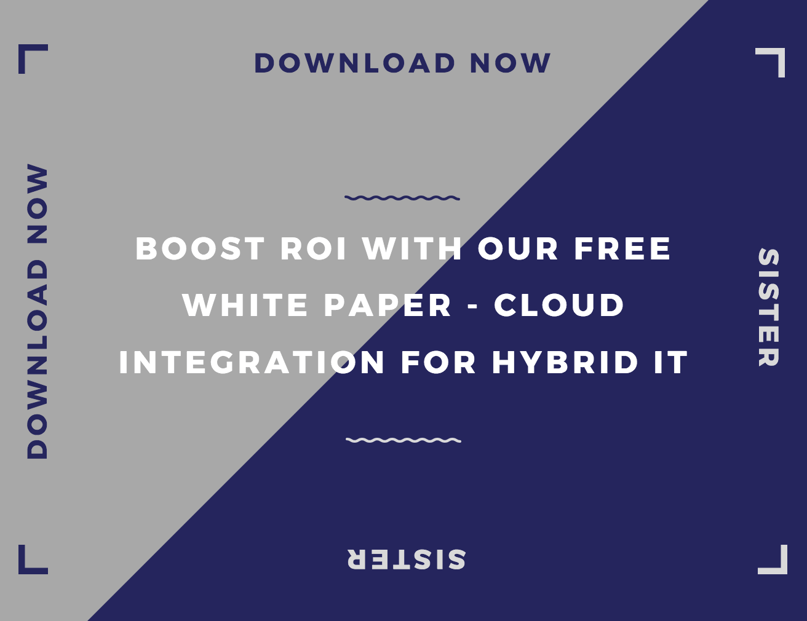
A Lean Technology Stack
Every company wants to get the best bang for their buck. Part of this is purchasing the right software packages for your company's unique needs. Year after year, companies add new and improved software to their technology stack, replacing outdated programs, adding additional analytics, exploring new options.
A study conducted by Capterra <span style="" times="" new="" roman";="" color:black"="">found that one out of three buyers did not demo any products when shopping for software, and 22 percent of buyers purchased the first software they considered. Companies are on a tight deadline, yet when software is purchased so often and so quickly, problems will arise.
Although companies are able to save time by shortcutting software purchase decisions, they run the risk of not selecting the proper solution that will meet their company’s needs, resulting in wasted product and unnecessary costs.
These problems manifest in several ways. For instance, a product might end up not doing exactly what the company needed, and will be pushed aside when a new product is chosen to replace it. Or a business might purchase a software package with functions that overlap with systems already in place. This means money is being wasted on duplicate software.
Furthermore, software packages have annual software maintenance fees that occur after the initial purchase. These are paid year after year in order to make sure software is still functioning smoothly, to add any necessary patches, and to have support should issues arise.<span style="font-size:18.0pt;font-family:" helvetica="" neue";mso-fareast-font-family:="" "times="" new="" roman";color:black"="">
Annual maintenance costs can be up to 20 percent the initial investment. When a business purchases, for example, a software that costs 100K, that decision undergoes rigorous examination. The company does its due diligence to determine if the cost is worth the investment.
<span style="" helvetica="" neue";mso-fareast-font-family:"times="" new="" roman";="" color:black"="">
Yet the 20K maintenance fees that incur year after year after installation almost always fall under the radar. Five years from now you’ve spent an additional 100K, and the costs will keep rolling in with little to no scrutiny to determine if the software is worth the continuous fees.<span style="" helvetica="" neue";mso-fareast-font-family:="" "times="" new="" roman";color:black"="">
Add this to the fact that, two years in, your company purchases a new product with overlapping functions. Now you’ve spent another 100K and you have an additional 20K maintenance fee. Five years after you purchased the first software, you have spent 200K on software and an incredible 160K on annual maintenance fees alone.
These types of ongoing software maintenance costs are a detriment to any company’s budget and need to be addressed immediately. With the implementation of a streamlined technology stack, companies may avoid unnecessary software purchases and maximize company resources.
Unused software or overlapping software packages are unnecessary costs that will continue to deplete your IT budget until you put a stop to them. These costs are a large part of why an average 72 percent of an IT department’s budget goes to simply “keep the lights on." A huge chunk of IT’s budget is spent on maintenance fees that keep both the software you’re using, and the software you forgot you had, fully functioning.
This leaves you with only 30 percent of your entire IT budget for new projects and investments. By not addressing the underlying efficiency issues that reside within an existing technology stack, companies are inadvertently crippling their current initiatives. This means less money for advanced analytics, for building a predictive model, or for creating a 360-degree customer view.
Yes, annual maintenance fees are not the flashiest piece of the IT budget. But there is a lot of money that can be saved when these are trimmed down to only encompass the products that are actually necessary and in use.
We have established that annual maintenance fees often fly under the radar, and this is why these costs balloon so quickly without being noticed. Now you can go tackle this business challenge and save your IT department’s budget, right?
Not quite yet. Because there is one more roadblock that gets in the way when companies discover this unnecessary spending and decide to wrestle it back down to a reasonable number.
That roadblock is, in a word, complexity.
Unfortunately for us all, a technology stack isn’t a Tetras board where we can clearly see what fits and where the holes and inefficiencies are. Rather, a technology stack can feel like an endless, snarled knot of yarn—even to the IT department themselves! Patches and upgrades and new software all mesh together until the process of discovering where a company can become more efficient feels unobtainable.

This is where many projects stop. They get bogged down or put on the back burner, until they and the enormous pile of annual maintenance fees are once again forgotten.
So now that you’ve discovered the black hole of annual maintenance fees, how can you fix the problem without the entire project being devoured by the black hole as well?
You hire an astronomer. Someone who has dealt with similar problems time and time again. Someone whose sole focus is the black hole, and who doesn’t have to divide their focus between solving technology stack inefficiencies and whatever other IT projects are currently underway.
I’m referring to Pacific Data Integrators.
Having a fresh set of eyes come in and critically evaluate a technology stack is a great way to start unraveling the problem. We can determine which products overlap, uncover any software that are hiding under dust and are no longer being used, and see if your annual maintenance fees are higher than they should be.
By allowing us to spearhead this project, you can allow your own IT team to focus all its energy on current projects. In the end, we will come to you with a step-by-step plan of how to get your technology stack into tip-top shape. No more duplicates, no more money being spent without purpose. Every penny you spend on an annual maintenance fee will, from that point on, be of actual use to your company. <span style="font-size: 18.0pt;font-family:" helvetica="" neue";mso-fareast-font-family:"times="" new="" roman";="" color:black"="">
Transition to Cloud Subscriptions
But we’re not done yet. There is one more question that companies have begun asking themselves, and asking us: What happens now that many of the world's top software companies are moving towards a subscription model?
Historically, companies have paid to license a software. Then they pay the annual maintenance fees we just discussed. I guarantee you, if you are a company that is more than a few years old, you have software installed that follows this traditional model.
But now software companies are toting around their flashy new cloud subscriptions. Subscriptions allow for greater flexibility and cost savings. They also often have support, upgrades, and automatic patches included in the package.
This puts many companies in a predicament. These new subscription-based software models sound like a fantastic deal. But then you look at your giant stack of existing products. Products you purchased for much more than the monthly or annual subscriptions. Products that you have paid years of maintenance fees to keep updated.
You own these products. It doesn’t make sense to throw that investment away and go after new, shiny cloud subscriptions. Yes those would be nice, but only if you hadn’t already purchased the product license.
So what does this mean? Your company is stuck with its installed software and with perpetual maintenance fees? Does this mean the only possible way for you to switch to a subscription-based model is to lose a ton of investment money? That doesn’t look good when you’re pitching subscription software to C-level executives.
I promise, I’m leading up to some good news. Great news, in fact! Because the rise of subscription software does not mean you have to throw your original software bundle out the window. Pacific Data Integrators has another option.
When we examine your current technology stack, Pacific Data Integrators can also help you transition to the cloud subscription model. We can help you negotiate for new, cloud versions of your current technologies at a reduced price.

We want to update your technology stack so it is the most efficient it can be and help you utilize your company's resources wisely as possible. And since subscriptions are a wise investment, they need to find a home in your technology stack.
Don’t fear that software subscriptions will be fleeting. Gartner estimates that over 80 percent of software companies will have exchanged their traditional license model to the subscription model by the year 2020.
Every year a company hesitates they are stuck paying out massive, unnecessary maintenance fees. So don’t wait to make the switch.
Allow us to tackle this project for you. Our goal is to enable you to enjoy all the benefits of subscription software while maintaining the maximum amount of your original investment. When you have been a loyal customer of a software company, you shouldn’t have to throw out your investment and start over at ground zero in order to get a subscription.
We will leverage our existing partnerships with some of the world’s largest software companies in order to get you the best possible deal when switching from the license model to the subscription model. Even if we don’t have a partnership with a software company, and we see that making the transition to cloud will save you money, we will go to them and use our extensive experience to negotiate a deal that will leave you both satisfied.
The software companies you work with will thank you for reaffirming your investment in their product. You IT team will thank you for providing them with the most updated software. And your budget will thank you most of all.


Posted by PDI Marketing Team
Pacific Data Integrators Offers Unique Data Solutions Leveraging AI/ML, Large Language Models (Open AI: GPT-4, Meta: Llama2, Databricks: Dolly), Cloud, Data Management and Analytics Technologies, Helping Leading Organizations Solve Their Critical Business Challenges, Drive Data Driven Insights, Improve Decision-Making, and Achieve Business Objectives.




